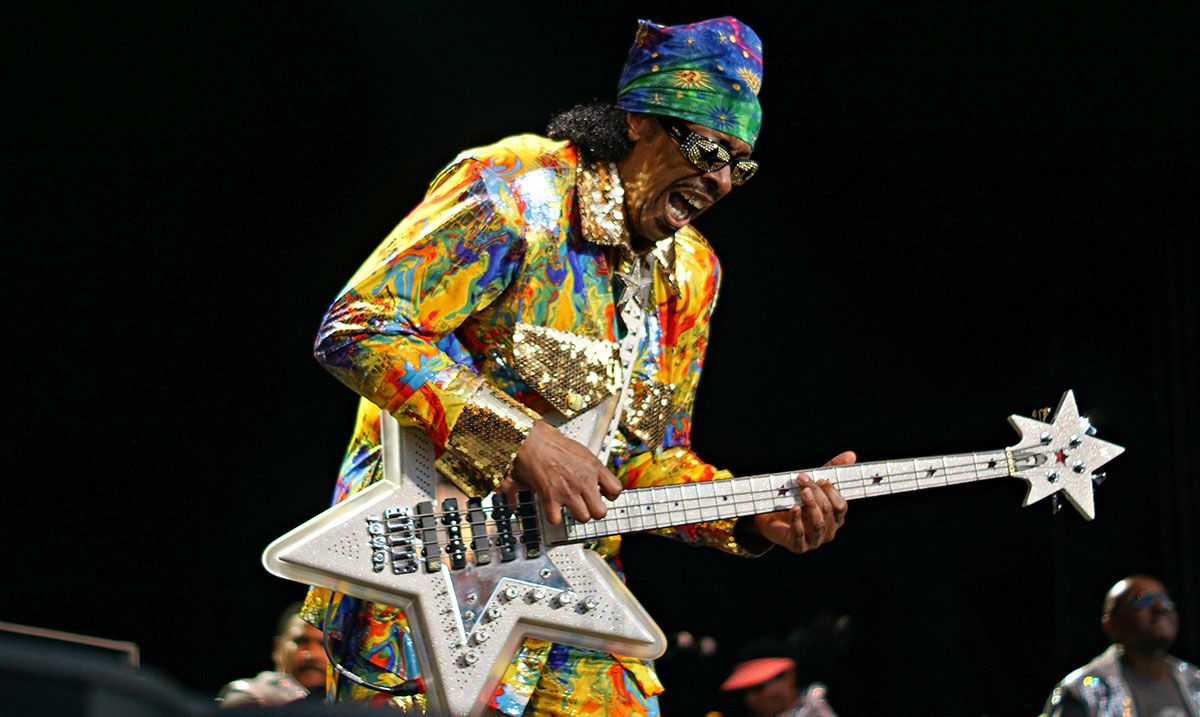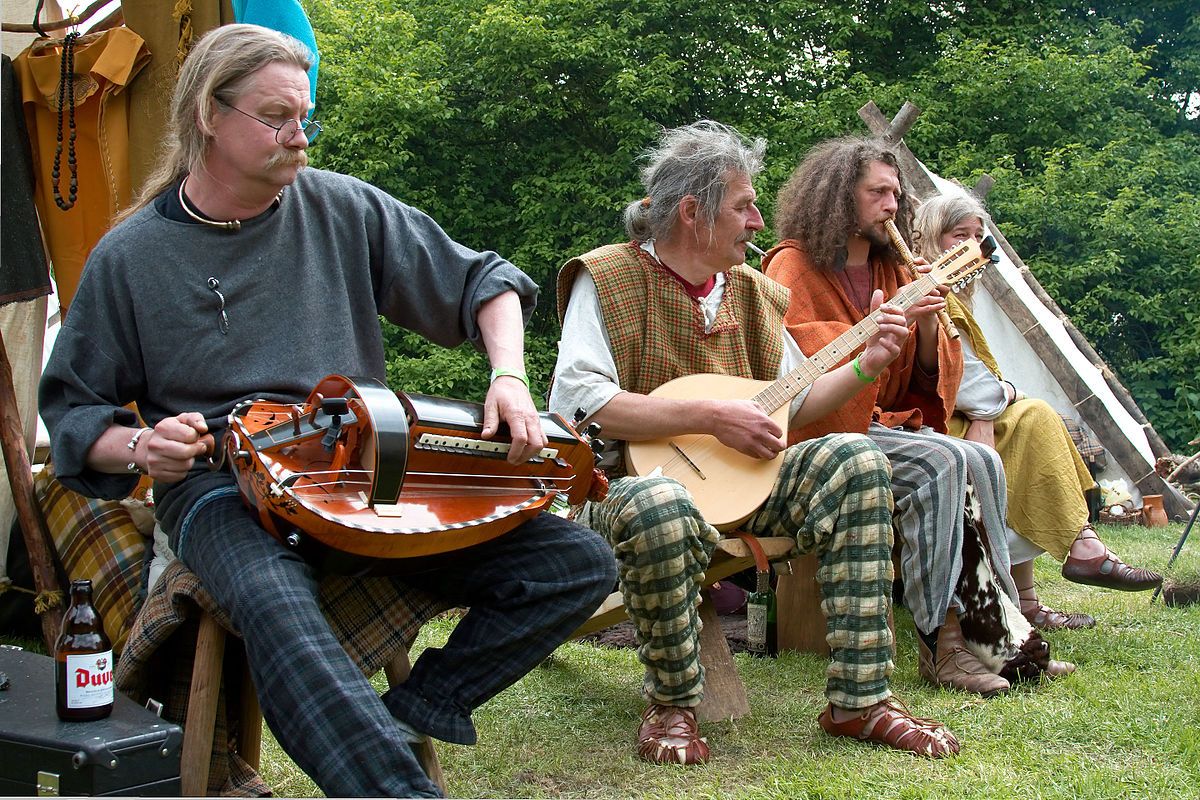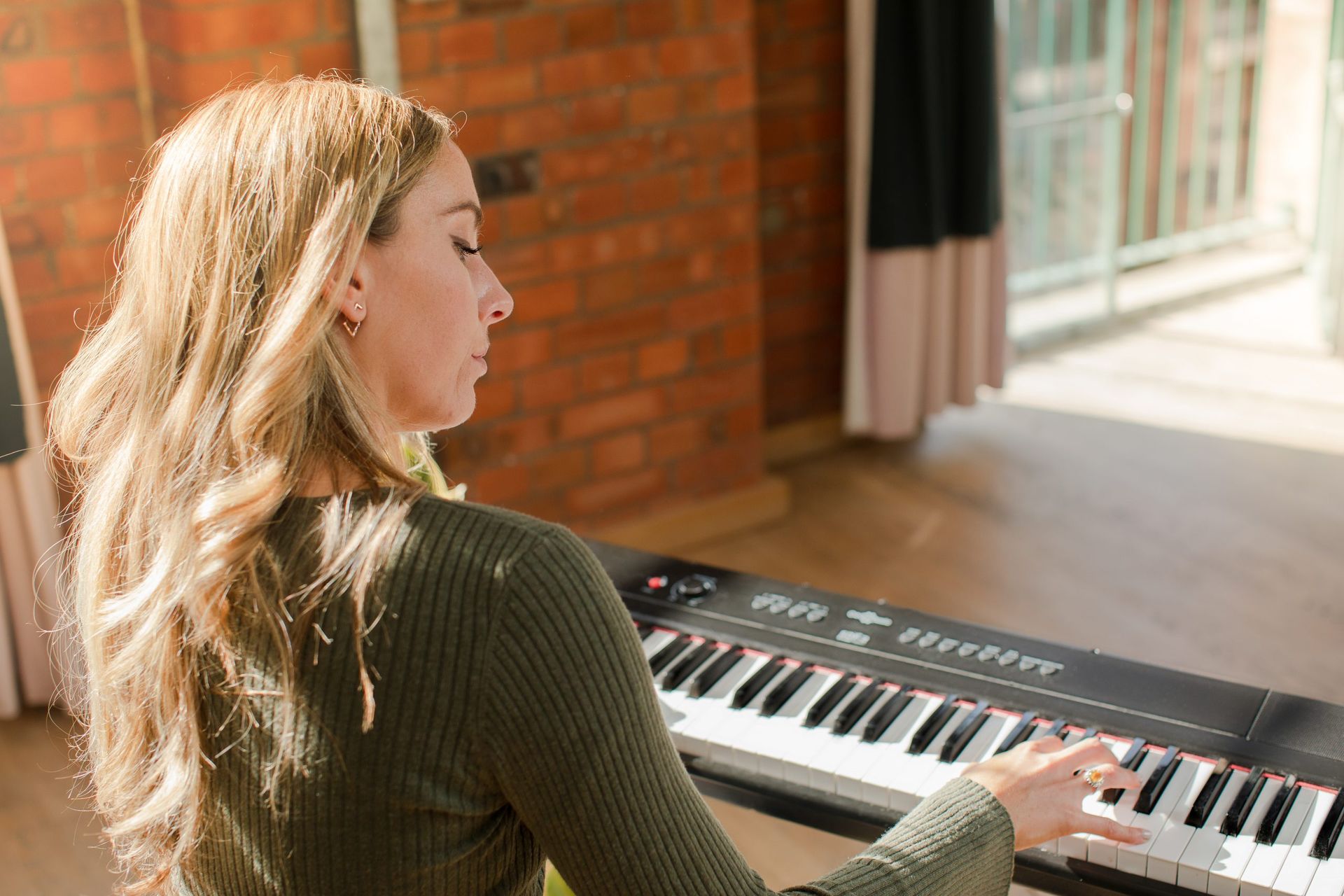Home>Production & Technology>Tempo>What Key And Tempo Is Funk Music


Tempo
What Key And Tempo Is Funk Music
Published: December 10, 2023
Explore the key and tempo of funk music, including the precise details and variations around rhythm and groove. Discover how tempo influences the energetic and infectious nature of this genre.
(Many of the links in this article redirect to a specific reviewed product. Your purchase of these products through affiliate links helps to generate commission for AudioLover.com, at no extra cost. Learn more)
Table of Contents
Introduction
Funk music is a genre that has made a significant impact on music history. With its infectious grooves, syncopated rhythms, and powerful horn sections, funk music has been an influential force in the development of various music styles such as R&B, soul, and hip-hop. One of the key elements that contribute to the distinctiveness of funk music is the careful selection of key and the tempo at which it is played.
In this article, we will delve into the world of funk music and explore the importance of key and tempo in shaping its unique sound. We will examine the characteristics of funk music, the role of key in determining its mood and tonality, and the significance of tempo in creating the irresistible rhythms that define the genre. By understanding these elements, you will gain insight into the complexity and artistry behind funk music.
So, whether you are an avid listener, a musician, or simply someone curious about the magic of funk, join us as we dive into the world of key and tempo in funk music. Let’s explore how these elements combine to create the infectious grooves that make funk music so irresistible.
Definition and Characteristics of Funk Music
Funk music emerged in the late 1960s and early 1970s as a fusion of soul, R&B, and jazz influences. It is characterized by its emphasis on rhythm, syncopation, and a strong groove that gets listeners moving. The genre gained popularity thanks to artists like James Brown, Parliament-Funkadelic, and Earth, Wind & Fire.
At the heart of funk music is its distinct rhythm. Funk beats typically feature a strong emphasis on the downbeat, often achieved through the use of a prominent bass line and tight drumming. This driving rhythm sets the foundation for the genre’s infectious grooves and makes it almost impossible not to bob your head or tap your feet to the music.
Another defining characteristic of funk music is its use of syncopation. Syncopation refers to the deliberate shifting of accents away from the expected strong beats of a measure. Through syncopation, funk music creates an exciting sense of tension and release, giving it a dynamic and unpredictable quality.
The instrumentation in funk music is another key aspect of its distinct sound. Horn sections, consisting of saxophones, trumpets, and trombones, are often featured prominently, adding a rich and powerful layer to the music. The use of keyboards, electric guitars, and bass guitars also contributes to the genre’s lush harmonic and melodic textures.
Lyrically, funk music often addresses social and political issues, with themes of empowerment, social justice, and self-expression. It blends the spirit of protest and celebration, combining thoughtful messages with irresistible grooves.
Overall, funk music is known for its energetic and infectious nature. Its rhythmic complexity, syncopated beats, and emphasis on the groove create an irresistible urge to dance and move. Whether you’re at a party or listening to a funk record in the comfort of your own home, you can’t help but surrender to the funky rhythms and infectious spirit of this genre.
The Role of Key in Funk Music
In funk music, the choice of key plays a crucial role in determining the overall mood, tonality, and feel of a song. The key refers to the tonal center around which a piece of music revolves. It affects the harmonies, melodies, and even the emotional impact of a composition.
One way the key influences funk music is through its impact on the bassline. The bassline is a fundamental component of funk, providing the foundation for the groove. The key determines the notes that the bassist will play, which in turn shapes the overall tonal structure of the song. The bassline acts as a driving force, establishing the musical context and dictating the harmonic framework for the other instruments to follow.
Besides the bassline, the key also influences the choice of chords and the mood of the song. Different keys have their own unique characteristics and emotional associations. For instance, a funk song in the key of E major might feel upbeat and energetic, while a song in the key of B minor might evoke a more introspective and melancholic mood. By carefully selecting the key, funk musicians can enhance the emotional impact of their music and create the desired atmosphere for their listeners.
Furthermore, the choice of key can also affect the vocal range and timbre. Different keys can bring out the best in a singer’s voice, allowing them to showcase their strengths and convey the intended emotions effectively. It is common for funk songs to be performed in keys that accentuate the power, grit, and soulfulness of the lead vocalist.
Lastly, the key can also impact the improvisational aspect of funk music. When musicians take solos or engage in musical exchanges, the key provides a framework for their improvisation. It sets the boundaries within which they can freely explore melodic ideas, allowing for creativity while still maintaining a cohesive musical structure.
In summary, the key in funk music plays a vital role in shaping the tonality, mood, and overall impact of a song. It influences the bassline, chords, vocal range, and improvisational opportunities within a composition. By carefully selecting the key, funk musicians can create a cohesive and compelling musical experience that engages listeners and takes them on a journey through the heart of funk.
Understanding Tempo in Funk Music
Tempo, often referred to as the speed or pace of a piece of music, is a crucial element in funk music that greatly affects its energy, feel, and groove. The tempo in funk music is typically upbeat and lively, designed to get people on their feet and moving to the rhythm.
In funk music, the tempo is usually characterized by a strong and consistent pulse. It sets the foundation for the entire composition and determines the overall feel and intensity of the groove. The tempo of a funk song is often fast and driving, creating a sense of urgency and excitement.
One of the defining features of funk music is its reliance on syncopated rhythms. Syncopation is the intentional disruption of the expected beat pattern, adding a sense of unpredictability and groove to the music. The tempo at which funk music is played greatly influences the effectiveness of syncopation. A faster tempo allows for quicker and more intricate syncopated rhythms, enhancing the overall rhythmic complexity and adding an infectious energy to the groove.
Moreover, the tempo in funk music also affects the danceability factor. Funk music is closely associated with dancing and getting people to move. A tempo that strikes the perfect balance between being fast enough to energize the dancers, yet not too fast to overwhelm them, is ideal for creating a groove that is both exciting and accessible.
It is worth noting that while most funk songs have a relatively brisk tempo, there are variations within the genre. Some funk ballads may have a slower tempo, allowing for more expressive vocals and a more laid-back feel. However, regardless of the specific tempo, the rhythmic drive and infectious energy remain essential to the funk genre.
Ultimately, the tempo in funk music sets the stage for the rhythmic intricacies and energetic grooves that define the genre. It affects the syncopation, danceability, and overall feel of the music. Whether it’s a high-speed funk jam or a slower funk ballad, the tempo plays a significant role in shaping the musical experience and engaging the audience in the irresistible funk groove.
Popular Keys in Funk Music
While funk music can be played in any key, there are certain keys that have become synonymous with the genre due to their characteristic sound and tonality. These keys, when used in funk music, bring out the signature elements of the genre and contribute to its overall vibe and feel.
One of the most popular keys in funk music is E major. Funk songs in E major often have a vibrant and energetic feel. The key of E major allows for the use of open strings on guitar, which adds a bright and resonant quality to the rhythm and lead guitar parts. Additionally, the key of E major allows for powerful horn sections to play in their most natural and resonant range, adding to the dynamic and full-bodied sound of funk music.
Another commonly used key in funk music is A minor. Songs in A minor have a darker and more soulful quality, evoking a sense of longing and introspection. The minor tonality lends itself well to the emotional depth and intensity often found in funk music. A minor also allows for melodic flexibility in both vocal and instrumental performances, enabling expressive and captivating solos.
B flat major is another popular key in funk music. Songs in B flat major have a warm and punchy sound, particularly when played on brass instruments. The key of B flat major allows horn sections to showcase their bright and bold tones, adding a lively and energetic element to the funk groove. Additionally, B flat major offers a comfortable vocal range for many singers, allowing them to deliver powerful and soulful performances.
Other keys, such as D minor, F major, and G minor, are also commonly used in funk music. These keys offer their own distinct tonal characteristics and contribute to the diverse range of sounds within the genre. It is worth noting that funk musicians are not limited to these keys and are known for experimenting and pushing boundaries, creating unique and innovative funk compositions in various tonalities.
In summary, while funk music can be played in any key, there are certain keys that have become synonymous with the genre. Keys like E major, A minor, B flat major, and others bring out the characteristic sound and tonality of funk music. By using these keys, funk musicians can enhance the energy, mood, and tonal textures that define the genre, creating irresistible grooves that keep listeners hooked.
Common Tempos in Funk Music
Funk music is characterized by its infectious grooves and energetic rhythms. The tempo, or speed at which a funk song is played, is a crucial factor in creating the distinctive feel and danceability of the genre. While there is a range of tempos found in funk music, there are some common tempos that are frequently used across various funk compositions.
One of the most common tempos in funk music falls within the range of 100 to 120 beats per minute (BPM). This tempo range provides a mid-tempo groove that is often referred to as a “funky pocket.” It allows for a steady but relaxed feel, providing enough room for intricate syncopation and expressive instrumentations.
At the faster end of the spectrum, tempos ranging from 120 to 140 BPM are popular in funk music. This faster tempo provides a high-energy and exciting feel. It propels the rhythms forward and inspires enthusiastic dancing and movement. Songs played at this tempo often have a sense of urgency and intensity, driving the groove with energetic bursts of syncopated rhythms and blistering solos.
On the slower side of the scale, tempos between 80 and 100 BPM are often used in funk ballads or slow jam tunes. These slower tempos allow for a more relaxed and sensual feel, showcasing the soulful and emotive aspects of funk music. Slower funk songs provide a platform for expressive vocals, intricate melodic phrasing, and laid-back grooves that invite listeners to sway and immerse themselves in the music.
It is important to note that while there are common tempos in funk music, the genre is highly diverse and allows for experimentation and variations in tempo. Funk musicians are known for pushing boundaries and exploring different rhythmic sensibilities. Therefore, it is not uncommon to find funk songs that deviate from the established tempo ranges, pushing the boundaries and creating unique sonic experiences.
In summary, the tempo in funk music plays a crucial role in shaping the energy, feel, and danceability of a song. Common tempos in funk range from the mid-tempo “funky pocket” to faster-paced, high-energy grooves, and slower, sensual ballads. While these tempos provide a general framework, funk music is known for its diversity and willingness to explore different rhythmic sensibilities. So, whether it’s a funky pocket groove or a pulsating up-tempo jam, the tempo in funk music sets the stage for irresistible grooves that get people moving.
Conclusion
Funk music is a genre that thrives on the interplay between key and tempo. The careful selection of key sets the mood, tonality, and emotional impact of a funk composition. It influences the bassline, chords, vocal range, and improvisational opportunities, shaping the overall musical experience.
The tempo in funk music provides the pulse and energy that drives the infectious grooves. From the mid-tempo “funky pocket” to faster-paced high-energy jams and slower sensual ballads, the tempo sets the stage for rhythmic complexity, syncopation, and danceability.
Popular keys in funk music, such as E major, A minor, and B flat major, bring out the signature characteristics and tonal textures of the genre. These keys provide a canvas for expressive vocals, dynamic horn sections, and soulful instrumentations.
Understanding the interplay between key and tempo is essential for both musicians and listeners to fully appreciate the depth and complexity of funk music. It allows for a deeper understanding of the emotional impact, groove, and improvisational possibilities within the genre.
As funk music continues to evolve and resonate with new generations, the exploration of different keys and tempos remains a vital aspect of the genre’s evolution. Musicians will continue to push boundaries and create innovative compositions that challenge conventions and captivate listeners.
So whether you’re a funk aficionado, a musician looking to explore the genre, or simply a lover of infectious grooves, diving into the world of key and tempo in funk music will open up a deeper appreciation for the rhythmic brilliance and undeniable appeal of this electrifying genre.











